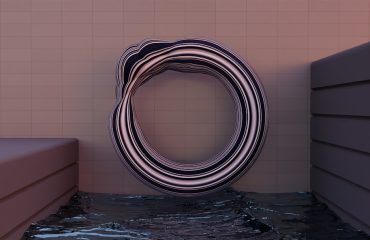body {
font-family: sans-serif;
line-height: 1.6;
}
h1, h2 {
color: #333;
}
img {
max-width: 100%;
height: auto;
display: block;
margin: 20px auto;
}
The shape we perceive as “round” is far more complex and fascinating than a simple definition might suggest. From the perfectly symmetrical circle to the subtly curved contours of a pebble, roundness permeates our world, impacting everything from mathematics and geometry to the natural world and human design. This exploration delves into the multifaceted nature of roundness, revealing its significance across diverse fields.
The Mathematical Definition of Roundness: Circles and Spheres
In mathematics, the epitome of roundness is the circle – a two-dimensional shape defined as the set of all points equidistant from a central point. This definition, seemingly simple, underpins a vast body of mathematical theorems and applications. The circle’s constant curvature, a measure of how sharply a curve bends, is a key characteristic. Moving into three dimensions, we encounter the sphere, the three-dimensional equivalent of the circle, possessing similar properties of perfect symmetry and constant curvature. Understanding these foundational shapes is crucial to grasping the broader concept of roundness.
Beyond circles and spheres, mathematical concepts like ellipses and ellipsoids introduce variations in roundness. An ellipse, while not perfectly round, maintains a sense of curved symmetry, albeit with two focal points instead of one center. Similarly, ellipsoids extend this concept into three dimensions. These variations highlight that roundness exists on a spectrum, not just as a binary condition.
Roundness in Nature: From Planetary Orbits to Cellular Structures
Nature abounds with examples of roundness, often serving crucial functional roles. Planetary orbits, while not perfectly circular, are often elliptical, demonstrating the prevalence of curved paths in celestial mechanics. The spherical shape of planets and stars is a consequence of gravity, pulling matter equally in all directions. This efficient packing of matter minimizes surface area for a given volume, a key principle in many natural systems.
At a microscopic level, roundness is also prevalent. Many cells are roughly spherical, a shape that optimizes nutrient uptake and waste removal. The spherical nature of raindrops is a direct result of surface tension minimizing the surface area of the water droplet. Even the seemingly irregular shapes of pebbles on a beach exhibit a degree of roundness, honed over time by the erosive forces of water and wind.
Roundness in Design and Engineering: Functionality and Aesthetics
The application of roundness in design and engineering is widespread, driven by both functional and aesthetic considerations. Wheels, a quintessential example, exploit the circle’s unique properties to facilitate smooth, efficient motion. The rotational symmetry of a wheel ensures uniform contact with the ground, minimizing friction and maximizing energy efficiency. This principle extends to gears, pulleys, and other rotating machinery.
Beyond functionality, roundness often plays a significant aesthetic role. The perceived softness and fluidity of curved lines contribute to a sense of harmony and visual appeal. Architects frequently utilize rounded forms to create visually pleasing structures, while designers leverage curves to enhance the ergonomics and comfort of products. The prevalence of round shapes in logos and branding further demonstrates its power in visual communication.
The Cultural Significance of Roundness: Symbolism and Mythology
Throughout history and across diverse cultures, roundness has held symbolic weight. The circle, often representing wholeness, completeness, and infinity, appears in numerous religious and mythological contexts. The cyclical nature of life and death, the phases of the moon, and the sun’s journey across the sky have all contributed to the circle’s association with eternity and renewal.
In many cultures, round objects, such as stones or beads, have been used in rituals and ceremonies, underscoring the symbolic power attributed to this shape. The widespread use of round tables in negotiations and gatherings highlights the association of roundness with equality and inclusivity, suggesting a sense of unity and shared purpose.
Beyond Perfect Roundness: Exploring Irregular Curves and Approximations
While perfect circles and spheres are idealized mathematical constructs, the real world is filled with objects that exhibit approximate roundness. The subtly irregular curves of a riverbed, the imperfect roundness of a hand-thrown pottery bowl, and the organic shapes of natural formations all demonstrate that roundness exists on a spectrum. Understanding these deviations from perfect roundness is crucial in fields like geology, biology, and material science.
Furthermore, the concept of “roundness” extends beyond simple geometric shapes. The curvature of a lens, the arc of a rainbow, and the complex curves of a seashell all exemplify the diverse manifestations of this fundamental shape. Analyzing these irregular curves requires sophisticated mathematical tools, but the underlying principle of curvature remains central to understanding their form and function.
In conclusion, the seemingly simple concept of “roundness” reveals a rich tapestry of mathematical principles, natural phenomena, design applications, and cultural significance. From the precise geometry of circles and spheres to the subtle curves of nature’s creations, the exploration of roundness offers a fascinating journey into the heart of form and function.
Tags: round, circle, sphere, geometry, nature, design




